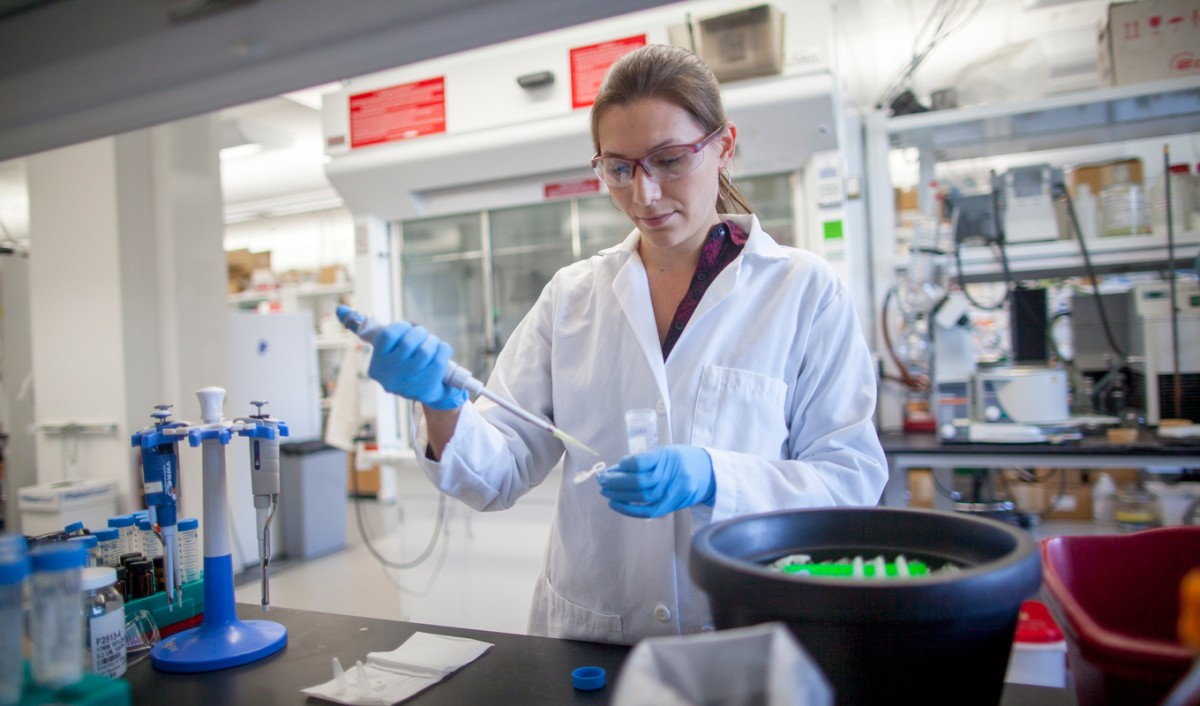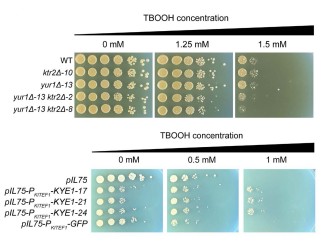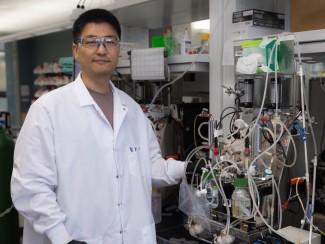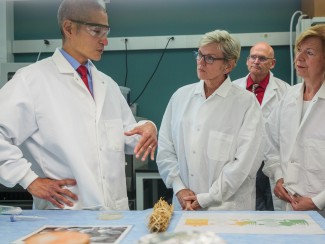
Developing sustainable, low-carbon fuels and industrial products is one of society’s greatest challenges. For the past 14 years, the Great Lakes Bioenergy Research Center (GLBRC), based at the University of Wisconsin–Madison, has been innovating advances toward a society powered by renewable chemicals and fuels derived from non-food plants.
To achieve this new future, GLBRC is laying the groundwork for economically viable and environmentally sustainable biorefineries that use dedicated bioenergy crops grown on land unsuitable for food production — work that could serve as a cornerstone for an emerging bioeconomy, especially in rural communities.
“This new bioeconomy has the potential boost to farmers and agricultural industries all across the country, creating rural economic development and jobs,” says Tim Donohue, GLBRC director and UW Foundation Fetzer-Bascom Professor of Bacteriology. “Our investments in our people, technology and infrastructure are helping position Wisconsin and the Midwest as leaders in this rapidly emerging industry. These investments have the potential to make this state and the region a host for industries that provide chemicals, fuels and materials that we currently import.”

Established in 2007 by the U.S. Department of Energy’s Office of Science Biological and Environmental Research program, GLBRC is housed at UW–Madison’s Wisconsin Energy Institute and includes a major partnership with Michigan State University and collaborators at several other universities and federal agencies. It represents one of the largest federal grants ever received by UW–Madison, with $375 million in three funding phases.
As one of four bioenergy research centers, GLBRC is part of a national network working to provide solutions to emerging problems as citizens, companies and governments call for a transition to sustainable and cost-effective fuels, chemicals, packaging and products made from renewable resources.
Research at GLBRC uses a cross-disciplinary approach that spans from the farm field to finished fuels. Dedicated research teams are exploring sustainable bioenergy cropping systems, the genetic optimization of crops and how to engineer microbes to convert plant sugars to fuels and other products. Simultaneously, teams of modelers are conducting social and economic analyses to make the biorefining process economically viable. These advances are driving discoveries at all levels of the field-to-fuel pipeline, including:
Developing agricultural landscapes as sustainable ecosystems.
Field and modeling studies of bioenergy crops are yielding a better understanding of soil carbon and nitrogen cycling and show that switchgrass-derived biofuels can lead to a net decrease in carbon emissions. What’s more, high yields of bioenergy crops can often be grown on land unsuitable for food production, offering an additional revenue source for farmers and multiple environmental benefits such as improved water quality, reduced soil erosion, and wildlife habitat for beneficial species including pollinators.
Advancing genetic and genomic tools to optimize/improve bioenergy crops.
As part of a large collaborative team, GLBRC scientists sequenced the complex genome of switchgrass, a highly adaptable perennial grass that is a promising candidate for making sustainable alternative fuels. The decade-long undertaking will now drive breeding strategies to allow the crop to be grown under a wide range of environmental conditions, an important step for sustainable, regional production of biofuels.
Making bio-based alternatives to non-renewable products.
Recent work described a previously unknown bacterial biosynthetic pathway for furan fatty acids, which could substitute for petroleum-based lubricants, fuels, and fuel additives. Another project developed a novel method to synthesize acetaminophen—the active ingredient in Tylenol—from a natural, plant-derived compound rather than from coal tar.
Analyzing the societal uses and impacts of renewable fuels and products.
Powering vehicles with plant-derived gasoline and diesel can reduce carbon emissions by up to 300% compared with petroleum, according to an eight-year modeling study; adding carbon capture and sequestration strategies boosts the potential benefit even further, up to 550% less than petroleum—more than any other land-based carbon mitigation strategy proposed to date. Additional work in GLBRC shows how the production of high-value coproducts, such as chemicals and materials demanded by industries across the state and globe, can diversify revenue streams and improve the overall economics of biorefineries.
“A growing set of university partnerships with local technology transfer leaders, such as the Wisconsin Alumni Research Foundation, and industry will help move the Center’s discoveries from the lab to biorefineries. With corporate investments in larger-scale production, we could be ready to begin the first phases of commercial application in as little as three years,” Donohue says.
The breadth, depth, and quality of the science at GLBRC attract top scientific and technical talent from around the world to the upper Midwest. Currently, the Center employs about 450 faculty, staff, and students, more than half at UW–Madison. In its first 14 years, it has trained a workforce of over 1,000 and built academic and industrial partnerships that have yielded 240 patent applications, 110 licenses or options, five start-up companies and nearly 1,500 peer-reviewed publications, which have been collectively cited more than 110,000 times.





